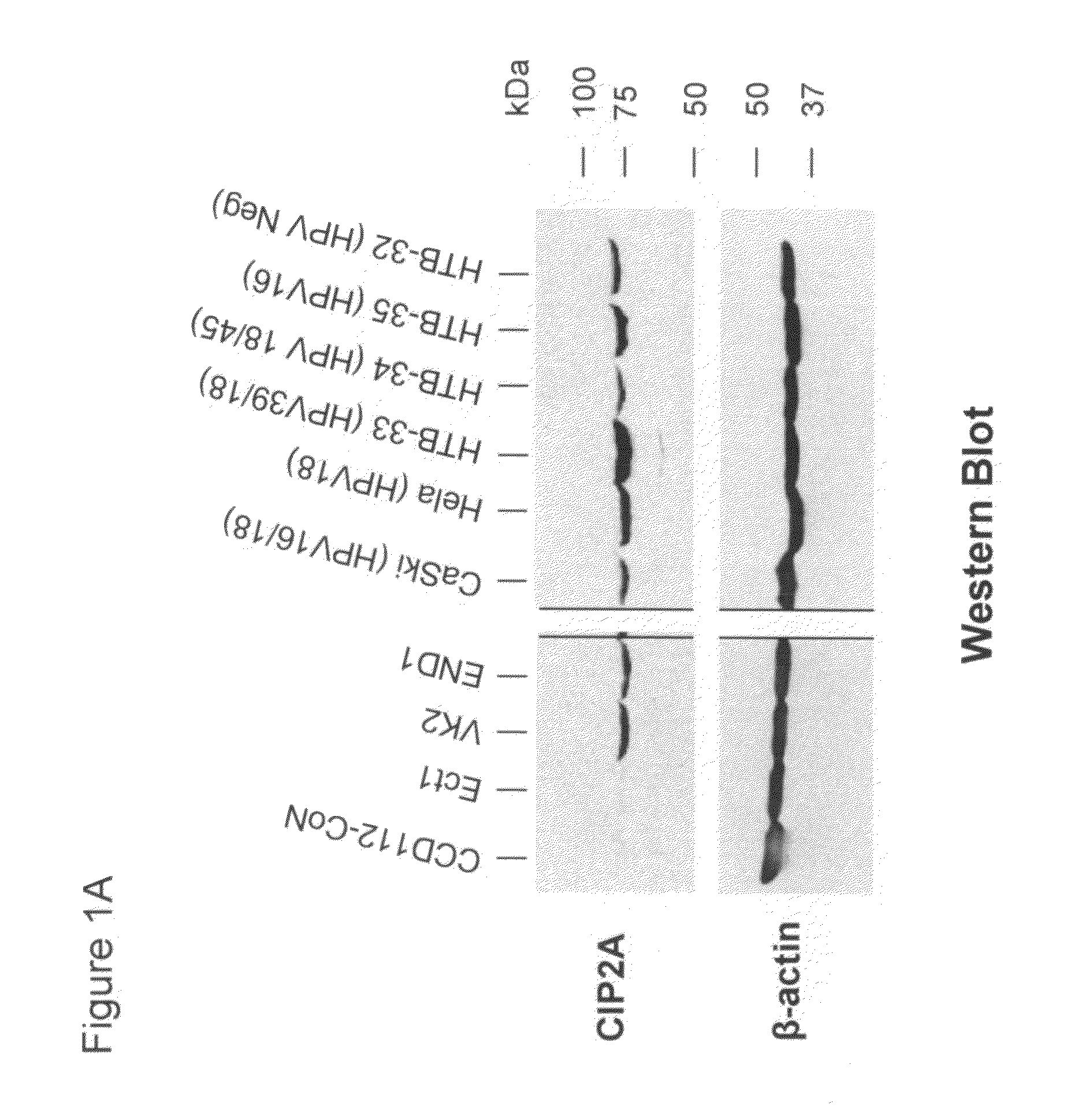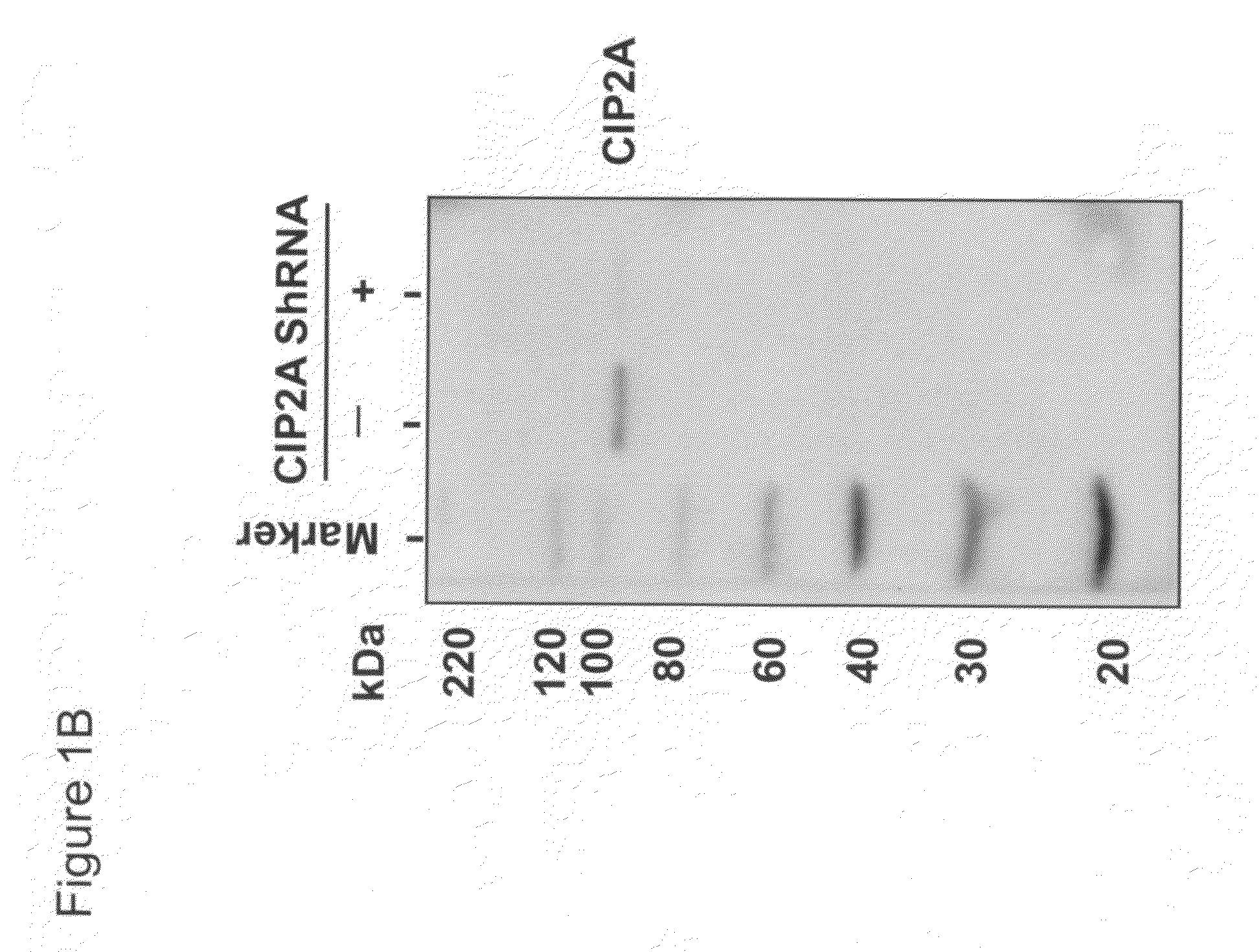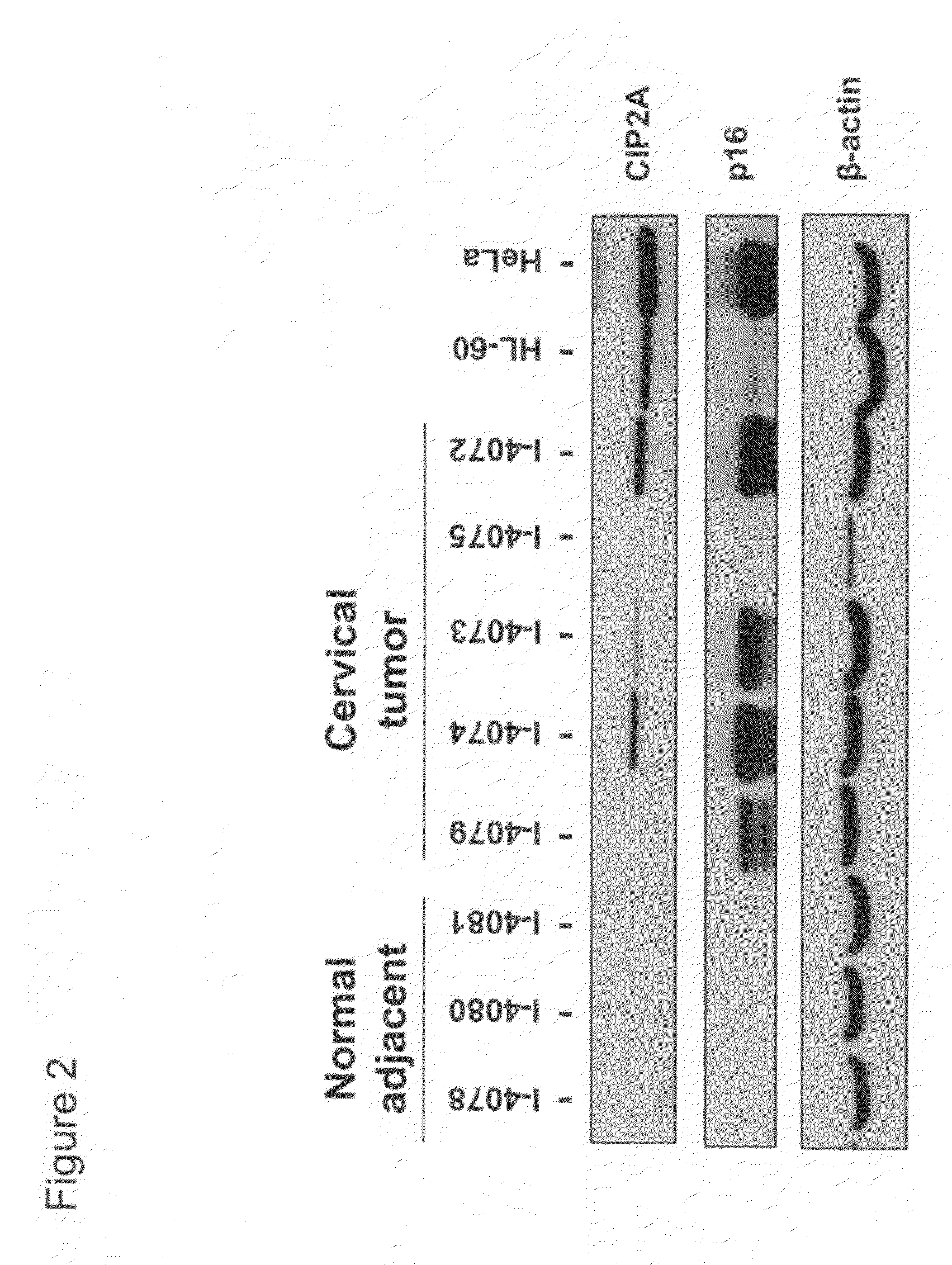CIP2A as a biomarker in detection of cervical cancer
a biomarker and cervical cancer technology, applied in the field of cip2a as a biomarker in the detection of cervical cancer, can solve the problems of insufficient clinical tissues, high cost of cervical cytology, and inability to identify a reliable biomarker for this deadly diseas
- Summary
- Abstract
- Description
- Claims
- Application Information
AI Technical Summary
Benefits of technology
Problems solved by technology
Method used
Image
Examples
example 1
Expression of CIP2A Protein in Cell Lines
[0129]We examined expression of CIP2A protein in various cancer cell lines. Six (6) cervical cancer cell lines were used. CIP2A protein expression was monitored by a Western blot assay. The cervical cancer cell lines used include CaSki, HeLa, HTB-32, HTB-33, HTB-34, and HTB-35. Cancer cells were cultured at 37° C. prior to protein assay. Cell lysate proteins were isolated using modified RIPA buffer (details in Experimental Methods and Protocols). SDS-PAGE was used to separate cellular proteins and subsequently transferred onto PVDF membranes, followed by detection using anti-CIP2A monoclonal antibody (Santa Cruz Biotech., Inc. CA; SC-80662) in a Western blot assay. CIP2A protein has a molecular size of ˜90 kDa. β-actin was used as a control in the assay.
[0130]As shown in FIG. 1A, all six (6) cervical cancer cell lines expressed CIP2A protein. Immortalized normal cervical cells (i.e., END1, Ect1, and VK2) and a colon fibroblast cell line (i.e....
example 2
Expression of CIP2A Protein in Cervical Tissues From Patients
[0133]In this example, we studied CIP2A protein expression in cervical tissues obtained from patients. Snap-frozen cervical tissue specimens derived from both normal subjects and patients who suffered from cervical cancer diseases were purchased from tissue banks. Cervical tissues were homogenized using mechanical force under liquid nitrogen. Protein lysate was prepared using modified RIPA buffer. Western blot assay was used to examine CIP2A protein expression in these cervical tissue specimens.
[0134]Cervical tissues from nine (9) normal subjects were found to have undetectable levels of CIP2A protein in our Western blot assay. (See, FIGS. 2 and 3). In contrast, out of the eleven (11) cervical tissues from cervical cancer patients, seven (7) were found to express CIP2A protein (i.e., ˜64%). HL-60 and HeLa cell lysates were used in the assay as positive controls. (See, FIGS. 2 and 3).
[0135]In sum, these data show that CIP2A...
example 3
Expression of CIP2A mRNA in Cell Lines
[0136]Next, we examined CIP2A mRNA expression in various cancer cell lines. Steady-state mRNA levels were monitored using qRT-PCR. qRT-PCR was performed in a thermo-cycler. Data was analyzed by qPCR software MxPro-Mx3000P (Stratagene, La Jolla, Calif.). Total RNAs from various cancer cell lines were prepared using RNeasy Kit (Qiagen, Valencia, Calif.). RNA transcribed into cDNA using specific primers (Abi, HS00405413-ml) (Foster City, Calif.). qRT-PCR was performed using Stratagene (La Jolla, Calif.) and cDNA was synthesized under conditions specified (details see “Experimental Methods and Protocol”).
[0137]Using CIP2A mRNA relative expression (i.e., quantified by a ΔΔCt method), we compared steady-state mRNA expression in various cervical cancer cell lines and compared them with those in normal cervical cell lines. Individual cell lines are depicted in the X-axis (of FIG. 4); and the relative expression of CIP2A mRNA is depicted in the Y-axis. A...
PUM
| Property | Measurement | Unit |
|---|---|---|
| incubation time | aaaaa | aaaaa |
| incubation time | aaaaa | aaaaa |
| temperature | aaaaa | aaaaa |
Abstract
Description
Claims
Application Information
 Login to View More
Login to View More - R&D
- Intellectual Property
- Life Sciences
- Materials
- Tech Scout
- Unparalleled Data Quality
- Higher Quality Content
- 60% Fewer Hallucinations
Browse by: Latest US Patents, China's latest patents, Technical Efficacy Thesaurus, Application Domain, Technology Topic, Popular Technical Reports.
© 2025 PatSnap. All rights reserved.Legal|Privacy policy|Modern Slavery Act Transparency Statement|Sitemap|About US| Contact US: help@patsnap.com



